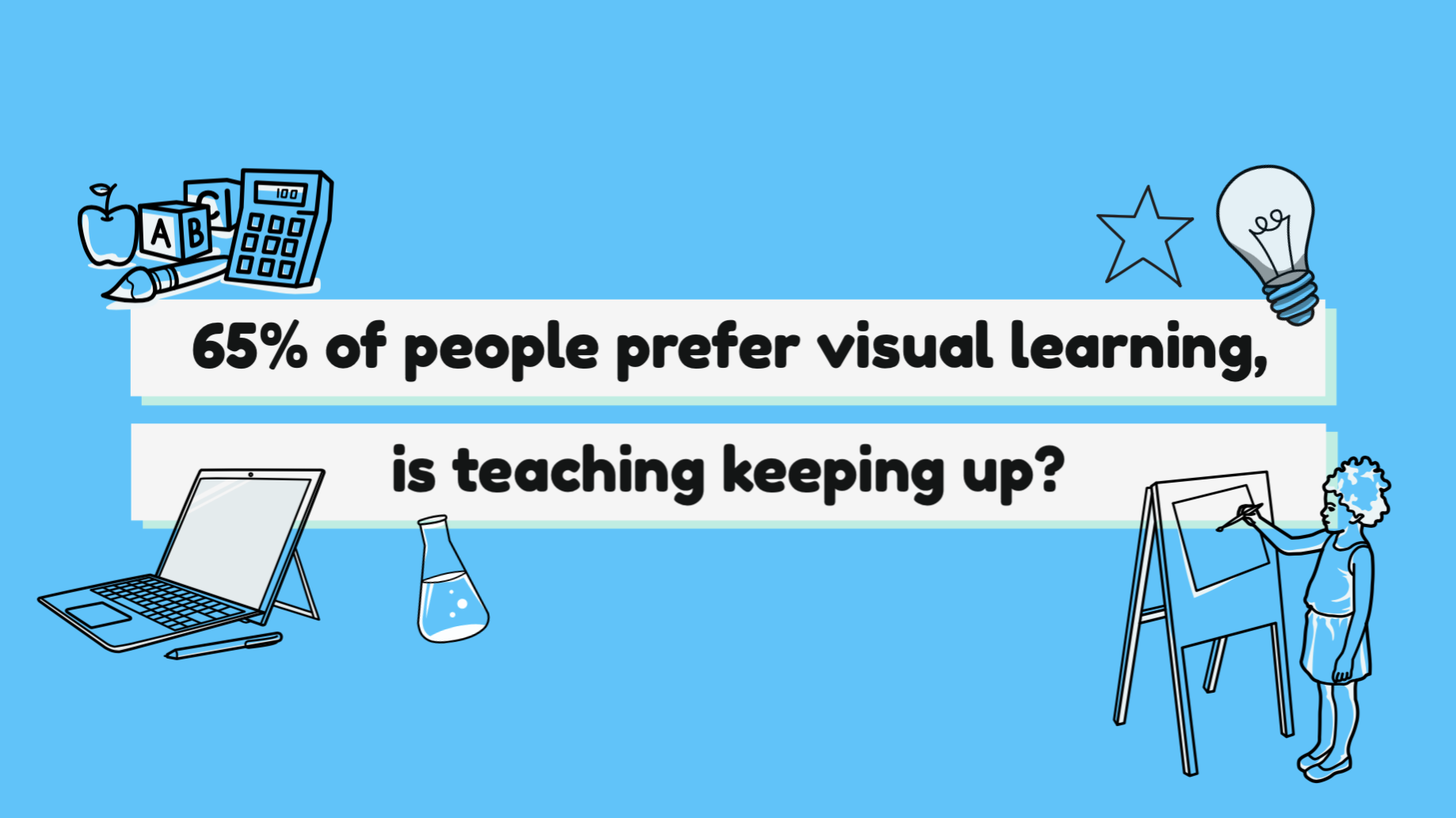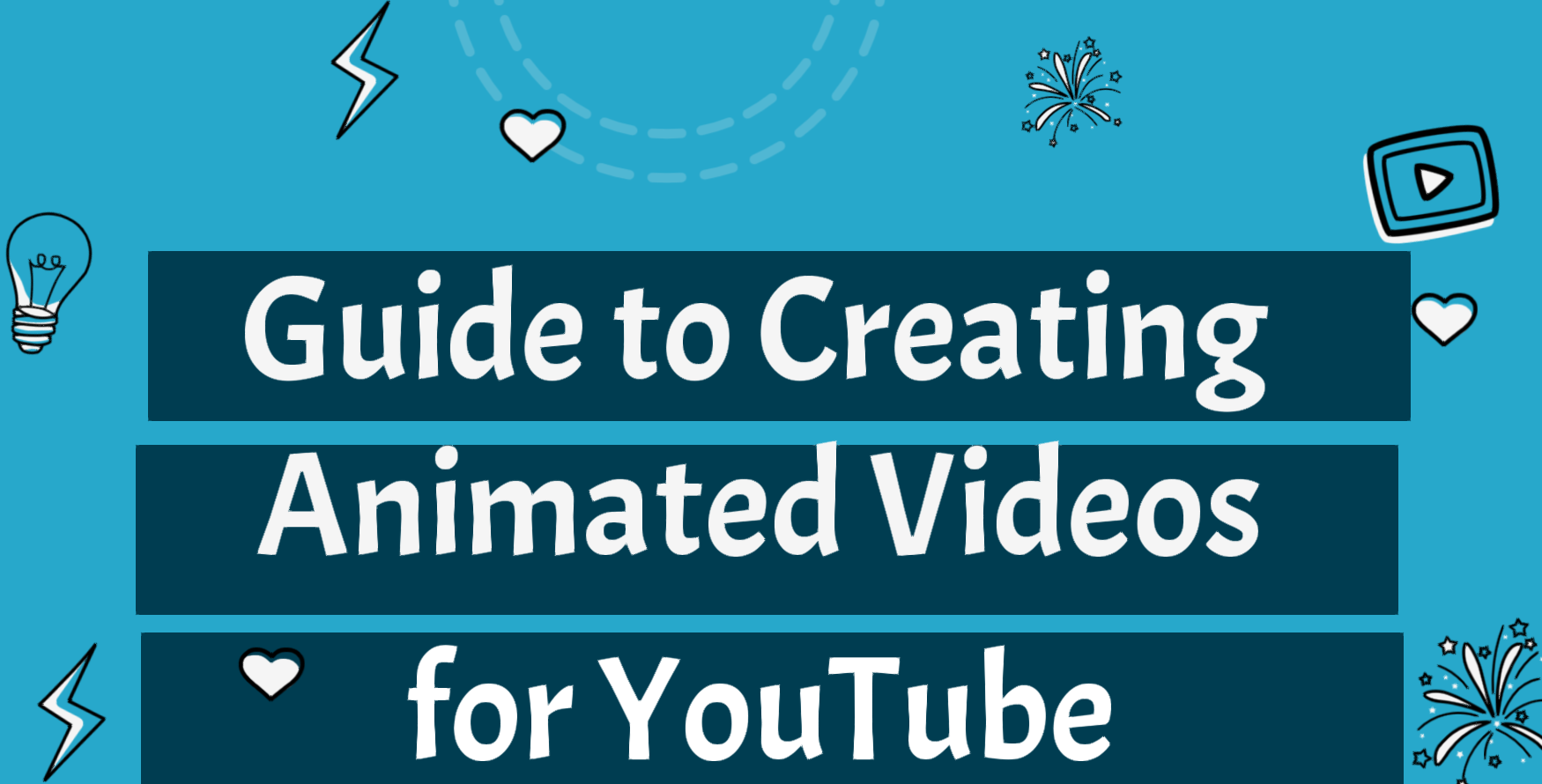Gone are the days when ‘video learning’ meant a battle-weary teacher trundling out the television on wheels, popping on a dated VHS recording from 15 years ago and hoping for 30 minutes of peace. Fast-forward a few decades and we don’t have to tell you that we’ve come a long way from the humble VHS. And with the advent of modern video technologies, the use of video in classrooms has become far more impactful.
Now that teachers and trainers are able to create their very own videos, it’s no surprise video learning is being utilized as a regular part of the classroom experience, rather than - as it was used for many of us - a tool to ‘break up’ the monotony of traditional learning methods. With several institutions adopting VideoScribe to breathe color and life into their lessons, we’ve been looking at some of the benefits they’ve experienced from video learning.
Why not sign up for your 7-day free trial of VideoScribe to start creating your own animated training videos? Simply click the button below to get started 👇
Facilitates understanding
Video is a great way to break down difficult concepts by infusing them with animation and movement. Take for example the VideoScribe explainer template. The wealth of images available allows the creator to convey any concept they need. No longer limited to the whiteboard and pen or PowerPoint, video animation can help distill difficult ideas. And considering 65% of us are visual learners, watching an engaging piece of video really appeals to the way in which the majority of us learn.
See the whiteboard explainer template in action! 👇
Combine a visually appealing video with a well-written voiceover and you’ve got a strong component to your lesson. For any of us who have ever delivered lessons or training, you’ll know that even the best planned explanations can become garbled in a ‘live’ classroom situation. Video voiceovers naturally lend themselves to clarity. Time constraints force the creator to cut the waffle, focusing only on the key terminology and ideas.
Promotes interest in the topic
Nowadays we’d have to make a conscious effort not to consume video each day. It’s everywhere. Whether it’s a quick scroll through social media between Zoom calls, or settling in for a Netflix binge, video has become a staple in our lives. Teenagers in particular spend a whopping 2.5 hours a day watching video.
If we rewind back 30 years, our senses weren’t continually stimulated by the screens around us. The story is different today. In an educational setting, this means ‘drier’ traditional learning methods are arguably less effective than they’ve been in the past. For young people in particular, new information needs to be presented in a way that speaks their language, lest you risk a sea of bored faces. Video learning does just that. By using a medium that’s a big part of people's lives, video grabs students’ attention, helping promote interest in the topic from the outset.
Improves knowledge retention
Video learning not only allows us to better understand the subject, but also improves our retention of it. Our brains naturally crave stimulation, which can be satisfied with the noise, sounds and colors of video. By providing a more enjoyable learning experience, we’re better able to absorb the information presented to us. Video has been shown to be 83% easier to recall than text alone!
We’re also better able to process video than text. In fact, a recent Forrester Research study indicated watching one minute of video was comparable to reading 1.8 million words. When we absorb more information about the subject, we have more information available to recall at a later date.
And if you’re looking for ways to optimize knowledge retention through video, check out some of the quick tips you can employ when making your own videos 👇
Video learning increases student engagement
As we’ve seen from the aforementioned VHS, the idea of using video in the classroom is not a new concept. What is relatively new, however, is the use of video learning to create active student participation. Video learning is often associated with the idea of throwing on a recording and hoping for the best. Nowadays modern video softwares allow for better student engagement, with teachers creating specific, relevant videos which encourage student interaction. And with higher student engagement comes the likelihood of students seeing out the duration of their course, rather than calling it quits midway through.
Take animation software for example and picture all the creative ways you can use it to engage with a class. Teachers can insert knowledge checks which directly relate to the syllabus, rather than being dependent upon a recording that may only be relevant at one point. Interactive quizzes can be created, or teachers can even have students create their own videos to demonstrate their understanding.
Check out the below lesson overview video template which you can use to give students an overview of what the lesson is going to be about 👇
To help you bring ideas and topics to life, have a look at our water cycle template where we’ve used existing images to illustrate the water cycle. Whether it’s irregular French -er verbs, or the molecular structure of gas, teachers and students alike can create revision videos on any topic using VideoScribe imagery.
Videos personalize learning
Over the last few years, there has been a general shift in education towards student-centered learning. A theory that first made an appearance in the 1930s, the idea is students can take more initiative in their own studies by working at their own pace, tailoring their learning towards themselves. In turn, this should promote lifelong learning skills, with students better able to educate themselves, rather than being solely dependent upon a teacher for instruction.
Video learning is a great way to contribute to this shift. By providing students with video resources, they’re able to pause, rewind and work at their own pace. Information that may have seemed unclear at first can be reinvestigated without the immediate need for a teacher's explanation.
Check out the below video to see 5 effective ways you can use animation in education 👇
Whether employing video to actively engage with students, or breakdown difficult concepts into understandable explanations, there are a plethora of benefits to using video learning in the classroom. Videos are no longer an occasional resource, but a highly effective teaching tool. Modern technologies now allow video learning to be both captivating and highly relevant with videos becoming frequently used within the classroom.



.png)



![How to create animation magic [3-part guide to video success]](https://blog.videoscribe.co/hubfs/How%20to%20create%20animation%20magic%20guide%20VideoScribe.png)



COMMENTS